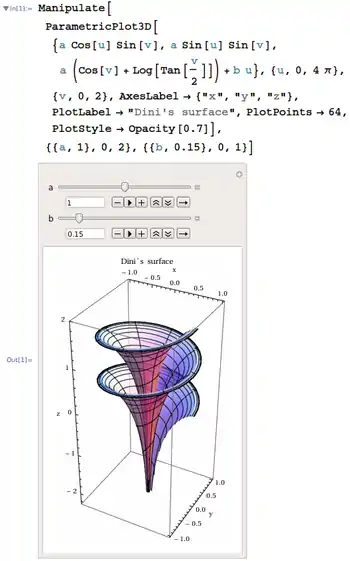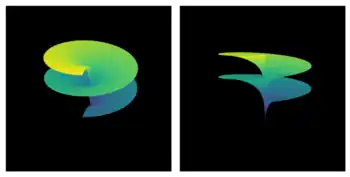
Dini's surface plotted with adjustable parameters by Wolfram Mathematica program

Dini's Surface with constants a = 1, b = 0.5 and 0 ≤ u ≤ 4π and 0<v<1.
In geometry, Dini's surface is a surface with constant negative curvature that can be created by twisting a pseudosphere.[1] It is named after Ulisse Dini[2] and described by the following parametric equations:[3]

Dini's surface with 0 ≤ u ≤ 4π and 0.01 ≤ v ≤ 1 and constants a = 1.0 and b = 0.2.
Another description is a generalized helicoid constructed from the tractrix.[4]
See also
References
- ↑ "Wolfram Mathworld: Dini's Surface". Retrieved 2009-11-12.
- ↑ J J O'Connor and E F Robertson (2000). "Ulisse Dini Biography". School of Mathematics and Statistics, University of St Andrews, Scotland. Archived from the original on 2012-06-09. Retrieved 2016-04-12.
- ↑ "Knol: Dini's Surface (geometry)". Archived from the original on 2011-07-23. Retrieved 2009-11-12.
- ↑ Rogers and Schief (2002). Bäcklund and Darboux transformations: geometry and modern applications in Soliton Theory. Cambridge University Press. pp. 35–36.
This article is issued from Wikipedia. The text is licensed under Creative Commons - Attribution - Sharealike. Additional terms may apply for the media files.